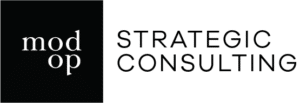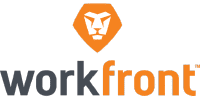As a top executive you want to improve the success of your organization’s products and services. You want your products and services to be developed, engineered and manufactured efficiently, to be competitive in the marketplace and to be uniquely responsive to customer needs. Most of all, you want them to sell, build brand loyalty, increase overall satisfaction and generate repeat business.
While this goal is clearly universal, achieving it can be challenging.
One of the main obstacles to success is a lack of organizational alignment around the customer in the context of user personas.
A user persona identifies your customer in terms of their needs and the “jobs they need to get done”. It’s not enough to just tell your teams to be customer-centric in their work roles.
If your teams are siloed and working independently of each other, important user insights may be absent or interpreted differently. Frequently this results in disappointing product launches and sales.
To achieve alignment and maximize your opportunity for success in the marketplace, a critical best practice and first step is to have your teams work together regularly to establish a common customer understanding through the development of user personas.
Signs of misalignment
You instinctively know when internal alignment and establishing common user personas are needed because you have lived these moments firsthand:
- Your product roadmap is based solely on user interviews and research from just one product manager.
- Your new product upgrade falls flat among current users and adoption is painfully slow in your customer base.
- Your new business initiative, go-to-market campaign, and sales battlecards fail to convert prospects into new customers
Misalignment leads to poor results across the organization because your outputs don’t consistently help users achieve their desired outcomes. The difference between your organization’s intentions and actual outcomes is a consequence of not working together to build and understand your user personas as a team.
The reasons for misalignment and frustration
There are many reasons for misalignment, but one of the most common mistakes is taking a systems-first approach. In a systems-first approach, a company might invest in the latest cloud-marketing platform hoping it alone will rally the troops around a common dataset that will magically generate a dashboard of actionable metrics, a ten-fold increase in pipeline opportunities, and double-digit growth.
The truth is that real traction is achieved when all functions work together to define and understand the needs of the people who use what you create and sell first. Technology to support these customer insights and data can then follow.
The value of a user persona workshop
One of the best ways to align your organization is to run a user persona workshop so team members can develop and define personas together, eliminating the possibility that any key customer insights get siloed or stuck in one department.
When done correctly, user personas help the organization develop empathy for the people who use your product.
Well-defined personas, particularly in digital product management, also help organizations design more targeted solutions, experiences, and messaging which ultimately leads to higher adoption rates and more revenue.
Leading consultancies and researchers have long documented the benefits of having sales, marketing, and product functions working and executing strategies in lockstep. In fact, IDC estimates that poor alignment of sales and marketing around processes and technologies could be costing B2B companies 10 percent of revenue per year. That’s more than $1 trillion in lost opportunity in the B2B marketplace alone!
Setting the stage
1. Determine who will participate.
Exactly who participates in your user persona workshop depends on your organization’s unique situation. In general, you’ll want to include key leaders and stakeholders from product, sales, marketing, and support teams.
2. Determine your structure.
The structure of your user persona workshop should be simple. Set a date/time, develop an itinerary and an agreed upon outcome that you want to achieve for each persona workshop. More tactically, you’ll also want to determine which of your market segments are addressed, and how many personas you will focus on.
3. Create the starting profiles prior to the workshop.
Once you’ve determined the priority markets and how many personas you’re going to focus on, you’ll want to assign the role of creating starting profiles. Starting profiles are personas at a very basic level and will be the baseline from which more detailed and elaborate persona profiles emerge during the workshop. The starting profile templates include key information, hypotheses around perceived user needs, and who is involved in meeting these needs within your organization. Prior to the workshop, share these templates with the participants. This way, during the workshop, you can quickly note your group’s conversation and insights on user needs and jobs to be done and map them to the personas.
Drafting the personas
Most of the user persona information you already have on file is likely to be demographic and psychographic. Things like age, occupation, location, marital status, hobbies, personalities, preferences, etc. As you dig deeper, however, you’ll want to drill down into behaviors and emotions, such as how they feel or act about certain situations. Use your group’s data, existing knowledge, and conversations together to address these key pieces of information.
Once you have the high-level details nailed down, then you can focus on the user needs and jobs to be done – which is where the gold lies.
Determining user needs
For digital products, a user is any person who intends on interacting with your product – from the organization you sell to, to the organizations they sell to. No matter which side of the product experience they are on, anyone who uses your product is a user with needs. This reality can (and should) influence how many personas you choose to begin with.
This step of running a successful user persona workshop requires previous research initiatives to uncover:
- What are your personas’ biggest pain points?
- What do they use your product for?
- Why do they really hire your organization?
- What jobs are they trying to achieve?
Understanding user needs at a deep level takes months and months of both qualitative and quantitative research, and we’d argue that it’s an ongoing process that’s never fully done. User needs are constantly evolving and changing, especially in this fast-moving digital environment we operate in.
Matching personas with a solution
Once your organization has defined the user needs for each persona, it’s time to match those needs with a solution.
This begs the key question of: Who or what within your organization solves for that need?
If you’re a larger company that has grown through acquisitions – or positioned as a house of brands – your persona needs and jobs to be done may be met and solved with different products or platforms. If you’re an earlier-stage or smaller organization, your personas may satisfy their needs through different features within one product suite. The bottom line is that your success rates can only be improved when you pair the user needs with solutions that satisfy them.
For a user persona workshop, this is a powerful exercise because your team is actively participating in the discovery of potential new hidden or unmet customer needs.
If you don’t currently have a solution for one of your user persona’s needs or jobs to be done, this exercise uncovers opportunities to innovate and grow your business through new or existing product development.
Use this information to align your team
Product, marketing, and sales teams in particular require tightly aligned strategies that will draw directly from the research findings and key takeaways from user persona workshops. How user persona needs will be met now and in the future is fundamental to the creation and management of product roadmaps, and go-to-market (GTM) strategies. Remember, together, you are building user personas that will help you increase the precision with which you develop products, build brand stories, and execute sales strategies.
But beyond these functions, a key and significant benefit of a user persona workshop is the creation of an organizational state of interconnectedness among all stakeholders – users, partners, staff, as well as senior team members.
To take interconnectivity to the next level, consider broadening the communication of your newly defined user personas to the entire organization in all-hands company meetings or individual department briefings. Make sure supporting documentation is shareable and easy to understand. Having a common vocabulary about user personas and needs is very important to build an enterprise-wide culture of engagement and collarboration. Who knows where the next innovative idea might come from when the whole organization is aligned around who you serve and what they need.
Ready to align your organization with a user persona workshop?
Get started by speaking to one of our experienced consultants.
Sign up for the bi-weekly dBrief email:

Paul Bonington, Managing Director
Paul has over 25 years of experience in senior operating roles where he has successfully built brands and launched businesses for organizations in all stages of maturity. At Mod Op Strategic Consulting, Paul is responsible for leading client engagements with a focus on business strategy, new products, business development, marketing and process optimization.















